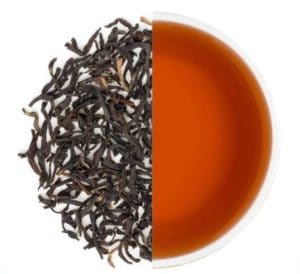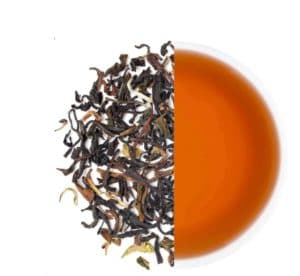8 Great Types of Black Tea You Should Try
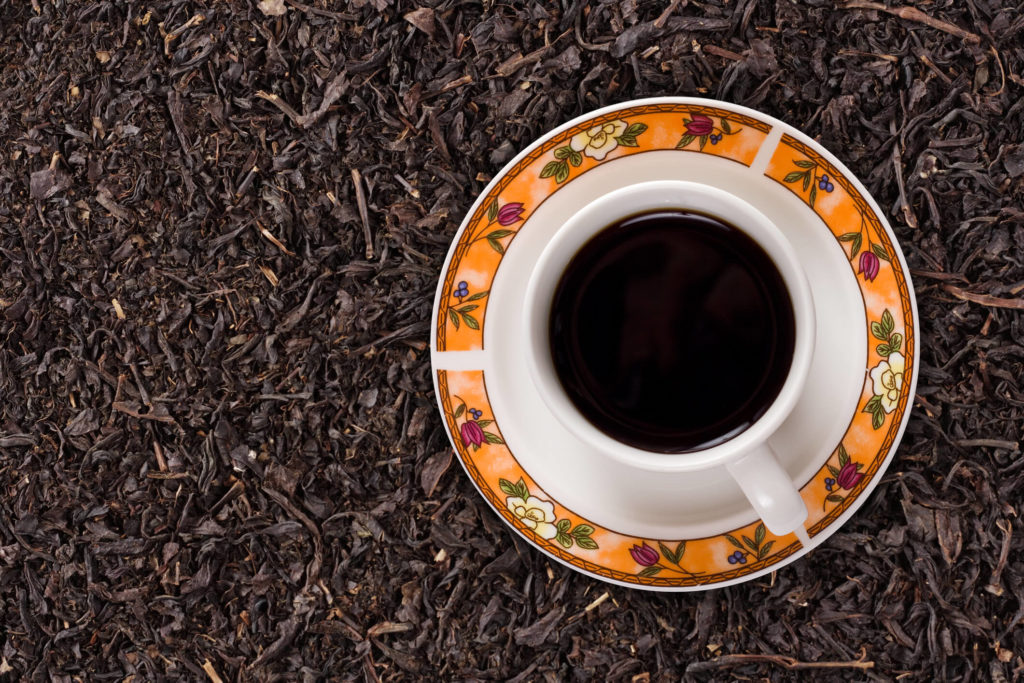
What makes black tea black, you ask? Read this guide to find out plus more! We will introduce you as well to the most popular types of black tea!
Black tea is the most widely consumed beverage in the world along with water (yes tea, not alcohol). A massive 159 million Americans drink it on an average day and 84% of all the tea drunk is black (1). People drink it pure, with milk and or sugar, or as boba tea.
Originally from China, this tea type it is more popular in the western hemisphere as the east prefers green, oolongs and other types of tea.
All true teas such as black, white, and green come from the same plant, the Camellia Sinesis. There are two varieties of this plant, the Camellia Sinesis var. Sinesis and the Camellia Sinesis var. Assamica, from the Assam region of India.
But it is their processing and oxidation level that determine what tea type they will become. The tea plant is kind of like a celebrity who not only acts, but sings, and has a range of products.
So let’s jump into details to see what processing methods and oxidation levels produce black tea!
And let’s review some of the most popular types of black tea resulting from variations in processing and oxidation levels!
Black Tea Processing
There are two methods used for producing different types of black tea.
The first one is the Orthodox Method.
The leaves are plucked from the trees, withered to reduce moisture by blowing hot air on them, and rolled by hand or by machine (called a rotorvane) to start oxidation. After oxidization occurs, they are graded.
It is a more time-consuming process, and the result is whole or only partially broken leaves, which means this method is seen as higher quality.
The second one is the Non-orthodox or CTC (Cut, Tear, Curl) Method. It is the quicker version of the two methods. The process is faster because the leaves are passed through serrated cylindrical rollers to cut, tear and crush the leaves. Also, the leaves are oxidized more quickly. They are heated to a higher temperature and dried out at a precise point. They are then graded depending on their size.
Black Tea Oxidation
What makes black tea black is the oxidization part of processing. The leaves are allowed to fully oxidize before being heat-processed and dried.
Oxidization is when oxygen interacts with the plants cell walls and the enzymes break down chemicals in the leaves (2). This is what creates the dark color of black tea and the aroma. It also changes the flavor, making it bolder and deeper.
The oxidation is what has made black tea types popular in the west. Fully oxidized tea means it keeps its flavor and it is fresher for longer, making it more suitable for transporting across the world from its origins in China (at least that was the case back in the day before planes).
Black tea preparation
In general, black tea takes higher temperatures and steeping times than other types of tea. The best way to brew black tea is to do the following:
- Use filtered water so the water won’t change the flavor of the tea.
- Ensure the temperature is between 190 to 212 degrees Fahrenheit.
- Steep the leaves or tea bags for up to 5 minutes.
Now let’s discover the different kinds of black tea, what makes them different, and our recommendations for each.
TYPES OF BLACK TEA
The largest producers of black tea types are India, Sri Lanka, Africa, and China.
The different black tea types have different profiles depending on where they have been grown, the climate, soil type, processing, and harvesting.
Types of black tea can also be a base or blend, such as when it is blended with bergamot to make Earl Grey tea.
However, in this guide, we’ll cover pure black teas. Stay tuned for a guide on black tea blends!
Types of Black Tea from India
One of the largest producers of tea for thousands of years, India is known for its many varieties of black tea including Assam, Darjeeling, and Nilgiri.
1. Assam Black Tea
From the Camellia Sinensis var. Assamica plant, this tea is specifically from the Assam region in northeast India.
Assam tea is also known as breakfast tea, English tea, or Irish breakfast tea. It’s important to state this when abroad, if you just ask for tea, you’ll get some confused looks.
It can be processed by using either the Orthodox or CTC method which creates tea leaves with golden tips, a sign of a high-quality Assam tea.
Assam black tea is known for its bold flavor, amber color, and can be drunk with milk and sugar.
The flavor for Assam black tea comes from the terrain and weather. Assam is grown at sea level, in a warm, wet climate. This results in a malty taste.
Recommended Assam Tea:
Namsang Classic Summer Black
This brand of Assam is vacuum packed and dated to let you know when it was picked, guaranteeing its freshness. Namsang Classic Summer Black is from the Namsang Tea Estate in Assam. This type of black tea has the typical malty black tea taste of Assam with hints of cocoa and dates. There is a caramel aroma to make your mouth water and it’s the color of stained wood.
Assam Black Tea
If you click this link & purchase, we earn a small commission at no additional cost to you. Thanks for your support!
2. Darjeeling Black Tea
In general, Darjeeling comes from the Chinese varietal of Camelia Sinensis.
Darjeeling tea is grown in a mountainous region of India, high in the Himalayas in West Bengal. It’s grown in smaller batches which is generally better for freshness.
Darjeeling is generally produced using the orthodox method.
The flavor can vary depending on the climate, but it can include notes of sweetness and fruit, and florals.
It is picked in spring and then late June, July, and August. Each picking at different seasons gives a distinctive taste to each batch.
Recommended Darjeeling Tea:
Classic Darjeeling Black
This brand ensures freshness with its vacuum-packed tea and date of manufacture. The distinct flavor of this black tea has hints of oak and nuttiness. The color resembles apricots and the scent is a mix of wood, spice, and sweetness. The tea is a blend of Darjeeling’s finest Chinary black teas with leaves a black brown color with sprinkles of green.
Darjeeling Black Tea
If you click this link & purchase, we earn a small commission at no additional cost to you. Thanks for your support!
3. Nilgiri Black Tea
Grown at 1,000-2,500 meters in the Blue Mountains or Nilgiris in Southern India, this unique tea is grown and harvested all year unlike other types of black tea.
It has a fresh flavor with notes of lemon and wood.
Processed using the CTC method, it is usually grown more slowly to concentrate the teas aromatic compounds. This also makes teas oxidize slower to give floral and spice notes.
Recommended Nilgiri tea:
Glendale Winter Frost Twirl Black
Produced in winter, this black tea type tastes fruity with the sweet aroma of amaryllis. It’s like spring in a cup. The tea leaves are long with some green open leaves.
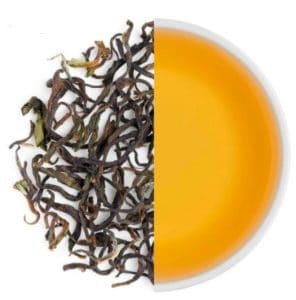
Nilgiri Black Tea
Glendale Winter Frost Twirl Black
If you click this link & purchase, we earn a small commission at no additional cost to you. Thanks for your support!
Types of Black Tea from Sri Lanka
Ceylon in Sri Lanka has half a million acres of tea gardens of various types, from mountainous to tropical. The tea generally has a strong note of spice.
4. Ceylon Black Tea
This type of black tea is grown in the Highlands of Sri Lanka once known as Ceylon, (hence its name).
Ceylon tea tends to have a citrusy flavor and full body.
Ceylon may contain higher levels of some antioxidants including myricetin, quercetin, and kaempferol which help prevent chronic disease.
Recommended Ceylon tea:
Alwazah tea, 100% pure Ceylon
This tea is reasonably priced so it’s good for everyday use. With a light consistency and no bitterness (unlike Gabbie Hanna), it may appeal to those with a sweeter tooth. The tea is cello wrapped inside the box for freshness.
Ceylon Black Tea
If you click this link & purchase, we earn a small commission at no additional cost to you. Thanks for your support!
Types of Black Tea from China
China is the original home of tea (and pretty much everything else we buy). There is a myth that in 2737 BC, the Chinese emperor Shen Nung was sitting beneath a tree when some leaves blew into the boiling water below and tea was accidently created (3).
5. Keemun
Keemun tea has an unusually slow withering and oxidation process which creates its flavor and light amber color.
Produced in the Quimen County in Anhui Province. It is mellow and has less tannins than other teas. It can be slightly smokey with possible hints of nuts and a flowery aroma.
Recommended Keemun tea:
Teayra Keemun Mao Feng premium Chinese black loose-leaf tea
Organically grown and placed in a zip lock pouch for freshness, this Keenum black tea has a honey flavor and can be used as a base for other drinks. It is smooth with a warm amber color. Harvested in early spring, it is of Mao Feng grade with its unbroken leaf tips.
Keemum Black Tea
If you click this link & purchase, we earn a small commission at no additional cost to you. Thanks for your support!
6. Yunnan
This type of black tea is also known as Dianhong. It is grown in the high mountainous region of Lincang Province in south China in a mild climate. It is processed using the Orthodox method.
Picked from March to November, it has a smokiness with hints of sweet cocoa, and has a deep red color.
Lychee and rose are used in the fermenting process which gives its sweetness.
Recommended Yunnan tea:
Yunnan Golden Special black loose-leaf tea.
Organically grown and cultivated by craft tea farmers, this black tea type is grown at high altitudes in a cool climate with natural woodland. Harvested from the end of March until April, its leaves are brown with strands of gold throughout. Its copper color has a creamy, malt flavor with cinnamon notes along with the earthy Yunnan flavor.
Yunnan Black Tea
Dian Mai Yunnan Golden Special
If you click this link & purchase, we earn a small commission at no additional cost to you. Thanks for your support!
7. Lapsang Souchong
This black tea type is from the Wuyi Mountains in the Fujian Province, China.
Also known in China as Zheng Shan Xiao Zhong, it features a smoky pine flavor.
It is withered over pine fires then pan fried. The tea leaves are rolled and placed in bamboo baskets over pine fires, known as a ‘hongdong’ which gives its ‘love it or hate it’ flavor, like the Housewives of Beverley Hills.
Recommended Lapsang Souchong tea:
Twining’s of London Lapsang Souchong
This smoky and woody tea is made from thick black leaves, and is grown in the Wuyi province in a select number of estates. The leaves are withered over cypress or pine wood fires before being placed in barrels. It’s then laid in flat wicker baskets on bamboo trays over pine fires to give it its smoky flavor.
Lapsang Souchong
Twinings of London Lapsang Souchong Black Tea
If you click this link & purchase, we earn a small commission at no additional cost to you. Thanks for your support!
Types of Black Tea from Kenya
Kenya only started growing tea in the early 1900s, but it is ranked third in tea production after China and India. It has different regions and districts producing this high caffeine black tea. Kericho is the most famous region in the Mau Forest for black tea.
8. Kenyan Black
This type of black tea is typically grown in small farms at the foothills of Mount Kenya. The high altitude of around 2,000 meters where it is farmed has been said to be the reason for the higher antioxidant content.
Likened to assam tea, it has a dark amber color, smooth texture, and fruity yet balanced flavor.
This tea is picked all year round. There is little need for pesticides because there’s not a lot of insects at that high elevation!
Recommended Kenyan Black tea:
Greenfield Kenyan Sunrise Classic Collection Black Tea
These teabags with tags are in foil sachets to keep out any air, light, or moisture. Grown in a mountainous district of Kericho at more than 2,000 meters in the clear and fresh mountain air, this is an organic tea features a delicate aroma and tart, with a mildly astringent taste.
Kenyan Black Tea
Greenfield Kenyan Sunrise Сlassic Collection Black Tea
If you click this link & purchase, we earn a small commission at no additional cost to you. Thanks for your support!
Frequently Asked Questions - Types of Black Tea
How much caffeine does black tea have?
Black tea has on average 40-60 mg of caffeine per 8oz (one cup). This is generally the most caffeinated tea. Steeping your tea for longer will make it stronger and more caffeinated, but if you overdo it you might end up with a bitter tea!
What is the best type of black tea; leaves or tea bags?
Tea leaves are generally higher quality. The leaves are kept more intact which means the oils which produce the flavor and health benefits aren’t destroyed. Tea bags have leaves which have been broken down which destroys some of the oils. There can also be dust and fanning’s in tea bags which lowers the quality.
How many calories does black tea have?
Most types of black tea contain 2 calories per 8oz cup which makes it great for weight loss or fasting. Unfortunately, if you add milk or sugar, it’s no longer 2 calories.
Is black tea acidic?
Yes, black tea is mildly acidic but not as much as coffee. Read our post about tea acidity to learn more!
Popular Post
What's the Best Tea for Cramps? Here are 7!
Types of Black Tea - Bottom Line
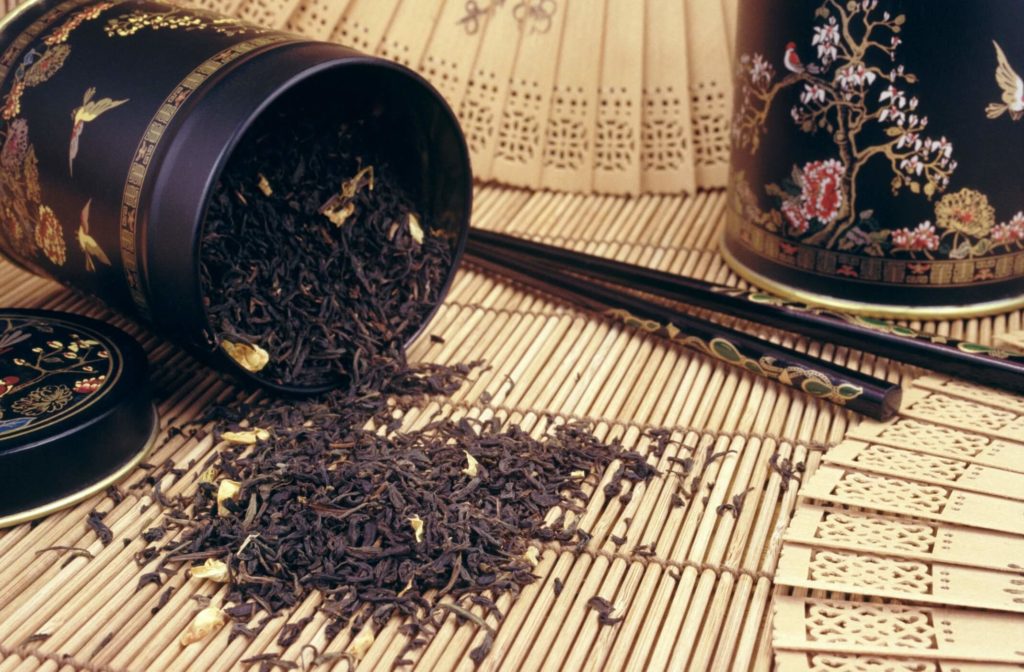
Black tea is one of the most popular and versatile drinks in the world. It can be drunk by itself or as a base for boba tea, or as a blend such as Earl Grey.
The complexities and the many different types of black tea mean you could spend quite some time never having the same black tea twice!
P.S:
Have you heard of Butterfly Pea Tea before? If not, then make sure to check our article about it!
This article is intended for informational purposes only. It is not meant to replace professional medical advice, treatment or diagnosis. Do not consume any type of tea if you are allergic to it. The information in this article is not intended to treat serious medical conditions. Please seek professional medical advice before using home remedies.
